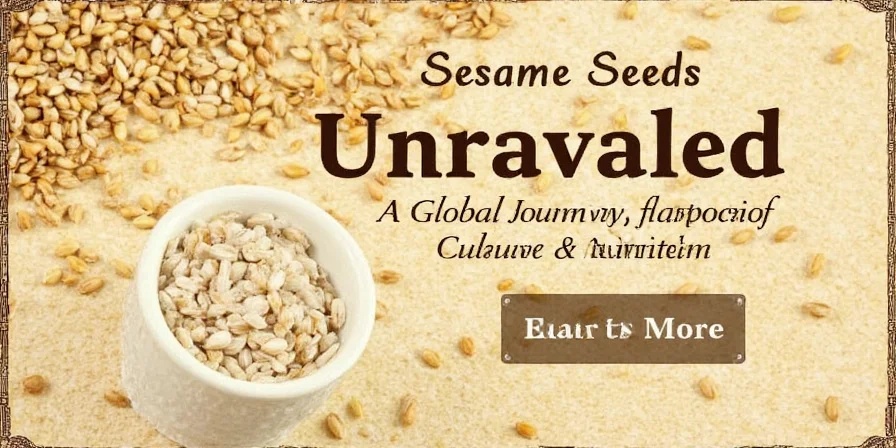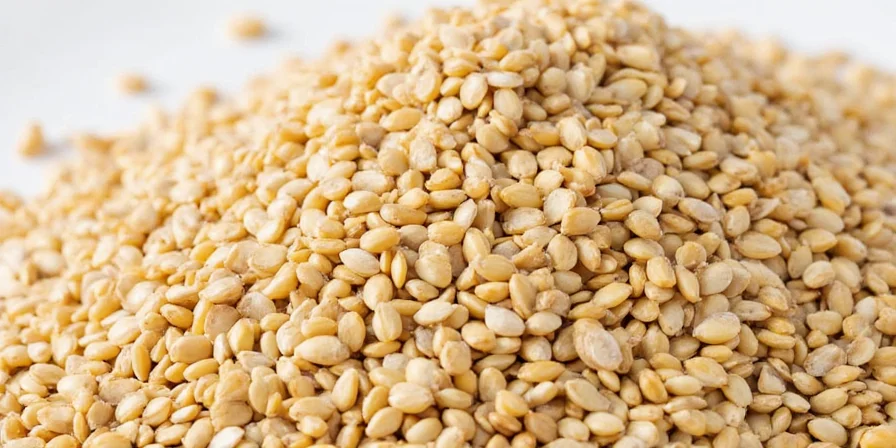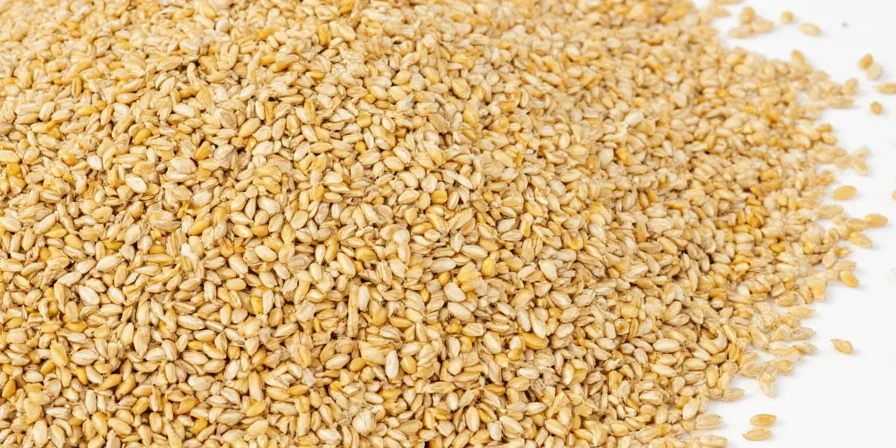From Field to Table: The Fascinating Origin of Sesame Seeds
If you've ever bitten into a warm bun sprinkled with golden sesame seeds or marveled at the creamy richness of tahini in your favorite hummus, you've experienced the magic of sesame seeds. But have you ever stopped to wonder... Where do these tiny powerhouses actually come from?
Table of Contents
- The Ancient Roots of Sesame Seeds
- Where Are They Grown Today?
- Types of Sesame Seeds Around the World
- Nutritional Powerhouse in a Tiny Package
- Culinary Uses Across Global Cuisines
- Tips for Buying, Storing & Using Sesame Seeds
- Conclusion: Embrace the Sesame!
🌍 The Birth of a Seed: Where Did It All Begin?
Sesame seeds are one of the oldest oilseed crops known to humanity. Historical records and archaeological findings suggest that sesame was first cultivated over 3,500 years ago in the Indus Valley and parts of Africa.

Historical Highlights:
- Egyptians used sesame oil in mummification and cooking.
- In ancient Mesopotamia, sesame oil was considered a luxury.
- Vedic texts from India mention sesame as sacred and nutritious.
- The famous phrase "Open Sesame!" from Aladdin reflects its cultural importance in Middle Eastern folklore.
🌱 Modern Sesame Cultivation: Who Grows the Most?
Today, sesame is grown across the globe, but certain countries dominate production due to favorable climates and agricultural practices. Here's a quick look at the top producers:
| Rank | Country | Annual Production (Metric Tons) | Main Regions |
|---|---|---|---|
| 1 | India | 700,000+ | Rajasthan, Madhya Pradesh, Gujarat |
| 2 | Myanmar | 600,000+ | Magway Region |
| 3 | Tanzania | 450,000+ | Dodoma, Singida |
| 4 | China | 400,000+ | Hubei, Hainan, Yunnan |
| 5 | Ethiopia | 350,000+ | Gambela, Oromia |

🥜 Color Me Sesame: Different Types Around the World
Did you know there are different types of sesame seeds? Each varies by color, flavor, and culinary use. Let’s break them down:
- White Sesame Seeds: Mild, nutty flavor. Popular in Middle Eastern and European cuisines.
- Black Sesame Seeds: Intense, slightly bitter taste. Used heavily in East Asian dishes like sushi and Chinese desserts.
- Golden/Brown Sesame Seeds: Commonly used in Indian and African cooking; often roasted for extra aroma.
| Type | Flavor Profile | Popular In |
|---|---|---|
| White | Mild, sweet, nutty | Middle Eastern sweets, breads |
| Black | Stronger, earthy, slightly bitter | Japanese temari sushi, Chinese sesame paste |
| Golden/Brown | Robust, aromatic | Indian gajar ka halwa, Ethiopian dishes |

💪 Nutritional Benefits: More Than Just Crunch
These little seeds may be small, but they pack a punch when it comes to nutrition. One ounce (about 28g) of sesame seeds contains:
- Calcium: About 98mg – great for bone health!
- Iron: Helps carry oxygen in the blood.
- Magnesium: Supports heart and muscle function.
- Zinc: Boosts immunity and skin health.
- Healthy Fats: Includes omega-6 fatty acids and some omega-3s.
- Lignans: Antioxidants like sesamin and sesamolin support liver health.

🍽️ Culinary Magic: How Sesame Seeds Spice Up the World
From Asia to Africa, Europe to the Americas, sesame seeds have become a global staple. Let’s explore how different cultures incorporate this seed into their cuisine:
- Japan: Black sesame seeds are ground into gomashio (seasoned salt) or mixed into dressings and noodles.
- Korea: Roasted sesame oil adds depth to kimchi and stir-fries. Whole seeds decorate rice cakes and pancakes.
- Middle East: White sesame seeds form the base of tahini, which stars in hummus, halva, and baba ghanoush.
- India: Used in everything from ladoos to chutneys. Black mustard and sesame seeds are also common in South Indian temple offerings.
- Mexico: Known as “ajonjolí,” sesame seeds appear in candies, sauces, and traditional breads.
- Ethiopia: Sesame oil is used for sautéing vegetables and legumes, especially during fasting periods.

📌 Pro Tips: Buying, Storing & Toasting Like a Pro
Want to get the most out of your sesame seeds? Follow these expert-approved tips:
- Buy whole seeds rather than pre-ground whenever possible to preserve flavor and freshness.
- Look for unhulled black sesame seeds if you want maximum nutritional value — the hull contains calcium and fiber.
- Store them in an airtight container in the fridge or freezer to prevent rancidity (they’re high in oils).
- Toasting sesame seeds intensifies their flavor. Use a dry skillet on medium heat, stirring constantly until golden and fragrant (about 2–3 minutes).
- Add them to smoothies, oatmeal, salads, granola, or even protein bars for a nutty kick.
- Try making your own savory sesame butter — just blend toasted seeds with a bit of oil and salt.

🔚 Conclusion: Small Seed, Big Impact
So now you know the answer to the question “Where do sesame seeds come from?” — a rich tapestry of history, geography, and culture spanning thousands of years and countless continents.
Whether you're a foodie looking for new flavors, a chef experimenting with spice traditions, or a health enthusiast seeking nutrient-dense superfoods, sesame seeds deserve a permanent spot in your kitchen.
Next time you sprinkle those golden or jet-black jewels on your dish, remember: you're not just adding crunch — you're honoring a global legacy.












 浙公网安备
33010002000092号
浙公网安备
33010002000092号 浙B2-20120091-4
浙B2-20120091-4